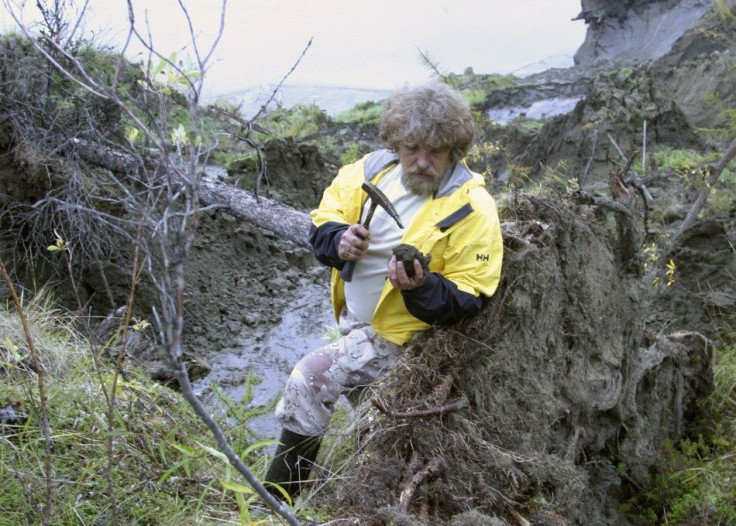Thawing Permafrost Makes Global Warming Even Worse
Scientist Studying Permafrost Melt

In a cyclical pattern that could increase sea levels and create more intense storms and droughts, the Earth's rapidly thawing permafrost is releasing tons of carbon dioxide into the atmosphere. With more of the greenhouse gas in the atmosphere, the Earth's temperature gradually rises, and causes more permafrost to melt. It's one of most difficult problems faced from the growing threat of global warming, according to scientists from the Permafrost Carbon Research Network. While melting permafrost will contribute to global warming, it won't have as big of an impact as electrical generation, by far the biggest generator of greenhouse gases. Cars and trucks also emit carbon dioxide and other greenhouse gasses, but power plants are a bigger cause. Specifically, fossil fuel burning plants.
The permafrost layer in places like Alaska usually only melts down a few inches during the summertime, researcher said in the Journal Nature. But, what is being seen now is up to 10 feet of permafrost is melting during the summer. That means all the greenhouse gasses that were trapped in the ice are being released in much higher quantities.
One of the biggest problems with melting permafrost, as well as with global warming in general, is that it is a slow process that people can't really see. In fact the worst effects of the process will not even be seen in our lifetimes. By the end of the century, however, it will be a different story. Additionally, the melting permafrost is hard on the surrounding environment, causing trees to lean to the side and roads to collapse.
As far as how much methane and carbon dioxide gas released from the permafrost will affect global warning, it could speed up the process by 20 to 30 percent, researchers said. Let us know in the comments if you've ever seen one of the YouTube videos where people light the methane leaking from the permafrost on fire.
© Copyright IBTimes 2024. All rights reserved.











